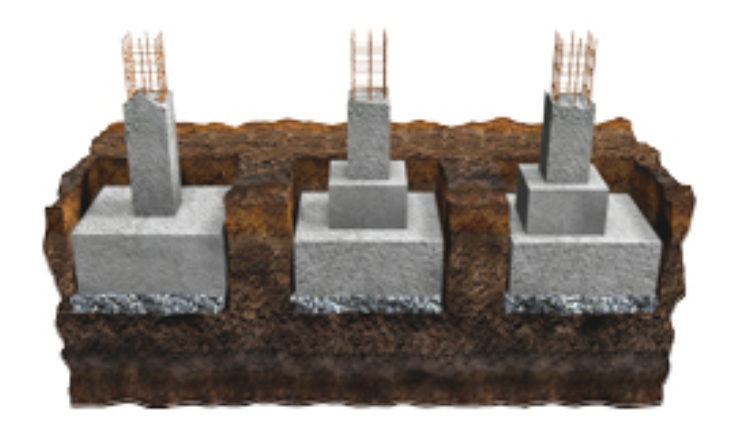An Introduction to Building Foundations


Back in our December 2018 blog on geotechnical investigations, we promised we’d follow it up with a more detailed review of the different types of foundations that are used in the construction industry. Today, we’re making good on that promise.
There are various types of building foundations, the most popular of which are as follows:
- Strip footings
- Pad footings
- Raft foundations
- Pile foundations
Foundations are typically divided into two categories:
- Shallow foundations: Strip footings, pad footings and raft foundations fall under this category. The foundations in this category are normally one metre in depth and are used for small, light buildings.
- Deep foundations: This category includes pile foundations and they typically extend to depths of 20 metres or more. They’re typically used for heavier buildings.

STRIP FOOTINGS
These foundations are typically found in buildings where low bearing masonry construction is used. They act as long strips that support the entire weight of the wall.

PAD FOOTINGS
Pad footings are used when the load of the building is carried by columns. Normally, each column will have its own footing. The footing can either be square or rectangular and they’re sometimes connected with ground beams of strip footings.
Let’s use the example of columns with a vertical load of 100kn and a soil safe bearing capacity of 100kn/m². Dividing 100kn by 100kn/m² will give you a required area of 1m². This gives you a rough idea of how these foundations are sized. Other factors may also need to be considered, which can result in the above calculations being readjusted.

RAFT FOUNDATIONS
Raft foundations are typically deployed in basement construction and can be used in conjunction with piles and other solutions to provide a prime of raft solution. The idea behind this kind of foundation is that the weight of the building is spread evenly over the entire footprint of the building. Raft foundations are often used when the soil is weak so that they can spread the weight of the building over a larger area.

PILE FOUNDATIONS
These are long cylinders of strong material which are installed into the ground, which will then support the structures bearing on top of the piles. Pile foundations can support much larger loads than spread foundations. There are two types of pile foundations:
- End bearing piles
- Friction piles
We’ll discuss pile foundations in more detail in a future article.
CONCLUSION
Thanks for reading, and we hope you found this article useful in explaining the various different types of foundations. We here at LSY Engineering Consultants Ltd. are involved in projects throughout the UK and beyond and we’re constantly designing foundations for various different structures. If you’re planning a project of your own and you need any advice, please feel free to get in touch with us. We look forward to working with you!
Back to all news
